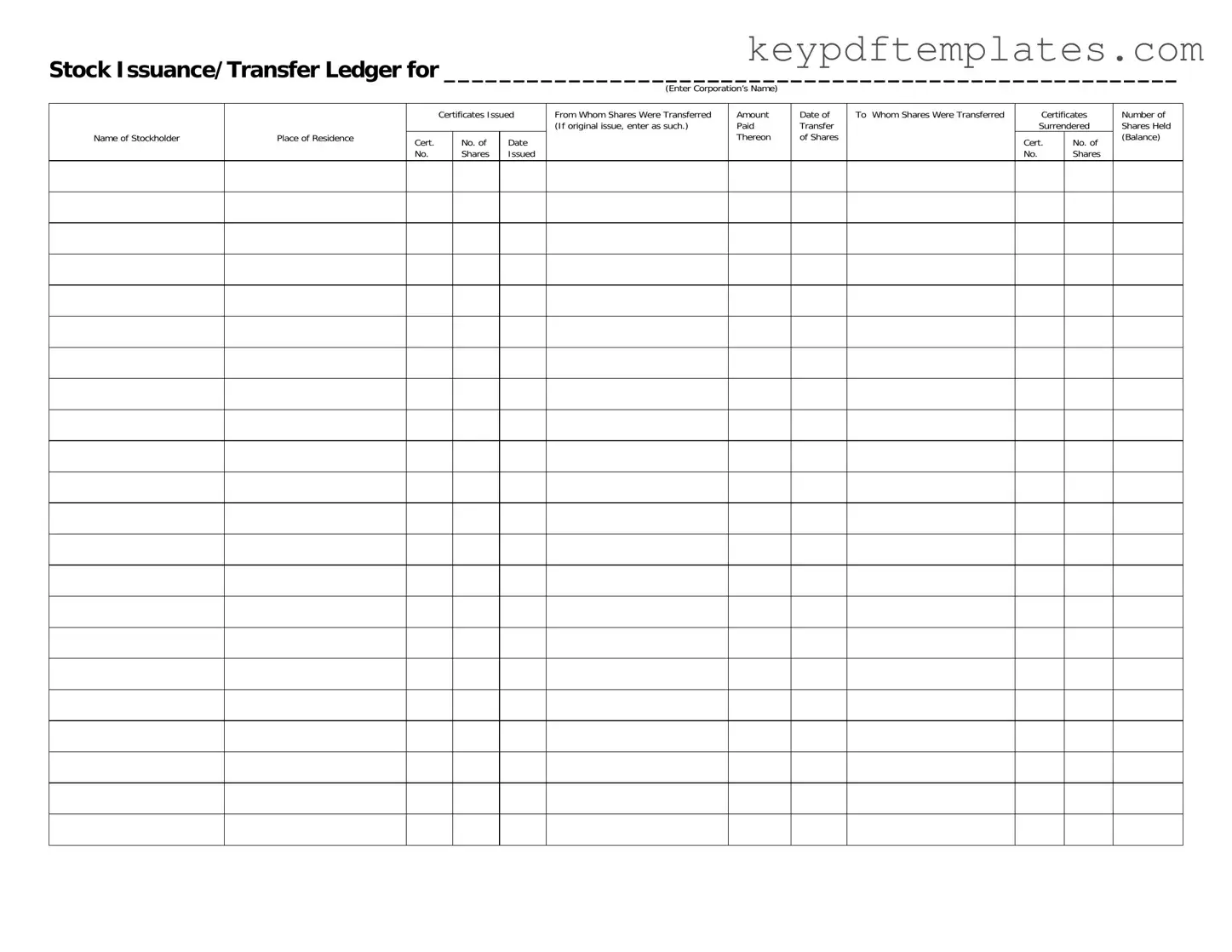Get Stock Transfer Ledger Form
The Stock Transfer Ledger form serves as a crucial record for tracking the issuance and transfer of stock within a corporation. It includes essential details such as the stockholder's name, residence, certificate numbers, and the amount paid for shares. By maintaining accurate entries, corporations can ensure compliance with regulatory requirements and facilitate smooth ownership transitions.
Modify Document Online
